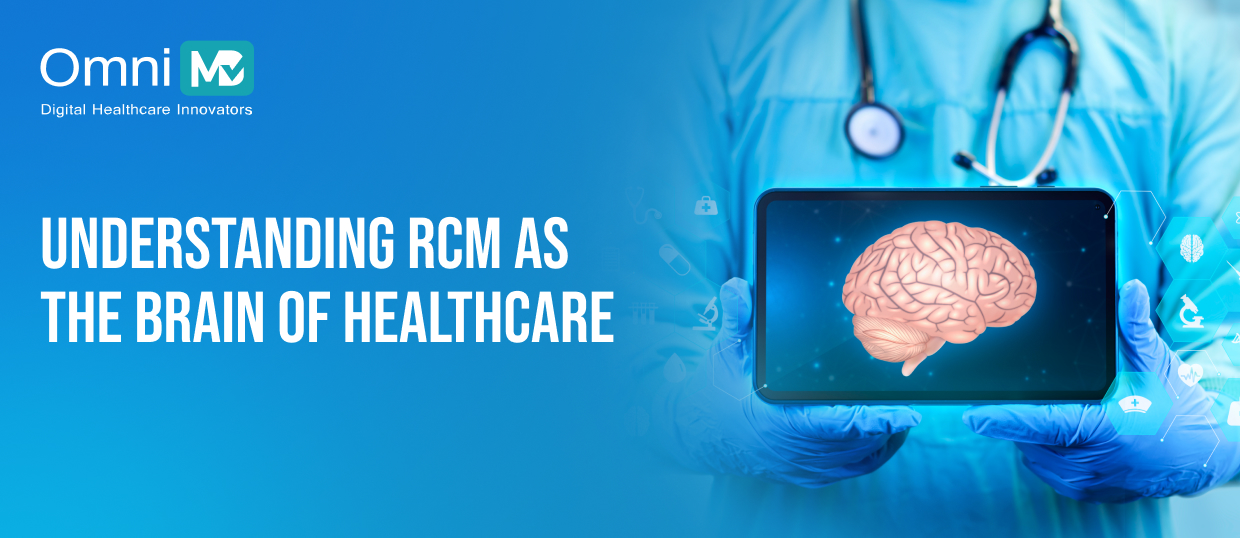What Practice Managers Get Wrong About RCM, and How Better Systems Help?
Modern healthcare runs on two invisible systems.
One heals the body. The other sustains the institution that provides the healing.
Both depend on rhythm, accuracy, and the capacity to learn.
When the second system, Revenue Cycle Management (RCM), falls out of sync with the first, the organization of care begins to falter.
Across the United States, healthcare providers lose an estimated $260 billion annually to inefficiencies in their revenue cycles (Outsource Strategies International, 2024).
These losses stem from a deeper structural misunderstanding.
Most practice managers still treat RCM as a clerical function, a back-office task rather than a cognitive system. In truth, RCM is a network that thinks, remembers, and makes decisions under uncertainty.
To understand this intelligence, we must see RCM as a living system, one that perceives, learns, and adapts.
This exploration unfolds across three layers: the systemic, the economic, and the philosophical.
Let’s begin.
The Anatomy of an Intelligent Machine
Every clinic operates like a cybernetic organism.
Patient data enters through sensory channels (scheduling and registration) and flows through neural pathways: EHRs, clearinghouses, payer systems.
Feedback arrives as denials, payments, and audits. The organism adjusts its internal rules accordingly.
In this sense, RCM is a system of recursive learning.
As Stafford Beer, the father of management cybernetics, said:
| “Organizations are machines for maintaining stability through self-correction.”
Yet most healthcare systems fail due to broken feedback loops.
A denial unreviewed is a missed signal. A payment unreconciled to its contract is lost feedback. A policy left outdated slows adaptation. Over time, the system loses its reflexes.
High-performing practices restore these reflexes by designing for feedback velocity, the speed at which truth travels through the system.
They connect scheduling, eligibility, coding, and billing through interoperable standards like FHIR and HL7, where every event, a code, a check, a payer response, becomes a node in a continuous conversation.
When information moves in coherent loops, the system learns in real time.
Revenue stability becomes not an outcome of control, but a property of design.
And once a system begins to learn, we can start to see the next layer: how it thinks in time.
The Logic of Delay and Decision
If feedback defines intelligence, then timing defines wisdom.
Financial leakage in healthcare behaves like entropy.
Every handoff, verification gap, and hour between service and submission dissipates informational energy.
The organization pays an invisible tax on time.
Economists call this temporal arbitrage; whoever holds information longest holds an advantage.
In RCM, that advantage too often belongs to payers. Practices lose liquidity simply because their data moves more slowly than their obligations. Traditional RCM tries to fix this through effort (more audits, more follow-ups, more reminders).
But as Harvard’s Michael Porter reminds us, “Activity is not strategy.”
The real solution lies in informational efficiency, the ability to turn uncertainty into a decision with minimal delay.
Healthrise (2024) found that clinics using analytics to map process latency improved operating margins by eight percentage points in five years.
This transition marks a cognitive shift:
RCM evolves from transaction processing to decision architecture.
The organization begins to think like an economist, optimizing for precision under constraint.
And this evolution becomes even more evident when we trace how a single piece of data, a claim, moves through the system.
The Hidden Path of Claims
Between claim submission and payment lies a black box governed by code.
Files travel through clearinghouses, payer engines, and validation scripts following ANSI 837 and 835 standards.
At each stage, data is parsed, scored, and sometimes stalled, often without explanation.
This opacity is where liquidity disappears.
Most practices measure success by the number of claims sent, not by the clarity of their transmission.
Modern RCM infrastructures introduce observability into this black box.
Waystar (2024) reported that organizations using claim intelligence maintain first-pass acceptance rates above 95%.
Each claim’s journey is timestamped and traceable, a digital audit trail of financial physiology.
When the system’s inner workings become visible, accountability improves.
Transparency transforms guesswork into governance.
But what happens when the system fails, when signals are rejected or distorted?
That’s where the intelligence of denials comes into play.
Denials as Systemic Feedback
In biology, pain is information. In RCM, denials serve the same purpose, signaling where adaptation is needed.
When denial data is treated as noise, it repeats.
When treated as a pattern, it instructs.
AI-driven analytics (AI RCM) now cluster denials by payer, service type, and documentation origin.
Health Catalyst (2024) found that predictive models using denial metadata reduced lost revenue by up to 30%.
Each denial sharpens the system’s perception of payer behavior.
RCM evolves from reactive to anticipatory, a form of institutional learning.
And once a system begins to anticipate rather than react, it crosses a threshold: it starts to prove its own intelligence.
Analytics as Organizational Memory
Every transaction writes a fragment of memory.
Analytics collect these fragments into a narrative.
MBW RCM (2024) called analytics “the heartbeat of healthcare financial management.”
Folio3 Digital Health (2024) identified four core metrics: clean-claim rate, denial rate, days in A/R, and collection ratio. These are the vital signs of financial health.
Their true value lies in continuity. Over time, they reveal how an organization learns.
Predictive analytics extend this further by forecasting revenue trends and identifying accounts likely to age out. This creates temporal intelligence, the ability to act today based on the shape of tomorrow.
At this point, RCM begins to resemble not a machine but a mind, one that senses, learns, and corrects itself.
This leads to the next frontier: integration as consciousness.
Integration as Organizational Consciousness
It is the moment when all parts of a system begin to sense and respond as one.
When scheduling, documentation, billing, and analytics share a unified data model, the organization behaves like a single mind.
A denial triggers a documentation review automatically.
A payer rule update adjusts coding prompts in real time.
Machine learning fills missing data.
RPA resubmits corrected claims without command.
PMC (2024) identified fragmentation as the greatest barrier to financial performance.
Integration removes that fragmentation not by linking systems but by aligning awareness.
Once awareness aligns, intelligence becomes visible not just internally but also in the way patients experience the organization itself.
The Patient’s View of Intelligence
Today, patients do not only experience care; they experience its economics.
As their share of payment grows, financial transparency becomes part of clinical trust.
Athenahealth (2023) found that digital billing portals with itemized statements and online payment options accelerate collections and improve satisfaction.
When patients understand their financial story, payment becomes participation, not compliance.
At this point, the intelligence of RCM connects back to its origin: the rhythm between truth, trust, and continuity.
That rhythm is what unites every layer of this system.
The Philosophy of Rhythm
Viewed from above, the entire revenue cycle resembles a single continuous thought.
The front desk captures truth.
Coding translates it.
Claims transmit it.
Denials refine it.
Payments confirm it.
Analytics remember it.
This rhythm mirrors biology itself: verification, translation, circulation, correction, recovery, memory.
A healthy organization functions not through control but through coherence.
As MBW RCM wrote in 2024, “Analytics is the heartbeat of healthcare financial management.”
The goal is not noise or motion but pulse.
When that pulse steadies, RCM ceases to be a pursuit of revenue. It becomes a study of truth, how an institution perceives, processes, and preserves the value of its own intelligence.
Closing Reflection
The future of RCM will not belong to those who automate first but to those who understand what they are automating.
At its highest level, RCM is not a department, nor even a process.
It is the consciousness of a healthcare organization: the way it converts information into trust, trust into continuity, and continuity into care.
When seen this way, every clean claim is more than revenue recovered.
It is a signal of organizational clarity and proof that the system, at last, has learned to think clearly.

Stop Losing Revenue to RCM Errors
Discover how smarter billing systems help practice managers recover time, cash, and control.
